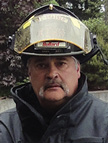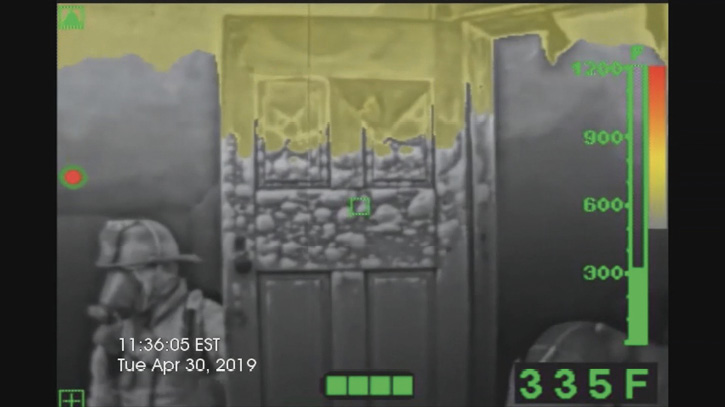In today’s environment, being right or wrong means nothing if you don’t have factual evidence to back up your claim. Back in my younger firefighter career, we carried a disposable 35mm camera to capture information from the scene we were responding to. Today, we have our phones and tablets in addition to cameras for capturing photos, but what about using a thermal imager (TI) for certain applications?

Pretty much every TI manufacturer today can provide a digital video recording (DVR) or some sort of image capture whether it is video or digital pictures or a combination. There are two schools of thought here—the believers in the technology who see the advantages and the nonbelievers who think that any kind of recording can come back to hurt them in some way, shape, or form. On the contrary, these DVR options can make your life much easier, depending on your role in the fire service.
RELATED
Thermal Imaging: Thermal Imaging Use in Fire Prevention
Thermal Imaging: Think Strategic Deployment During Fire Attack
Thermal Imaging: Let’s Talk Thermal Imaging
Several applications for DVR use come to mind from prevention, investigation, training, and fireground operations. As the old saying goes, “A picture is worth a thousand words.” Let’s break down some of these applications:
- Fire prevention: How many inspectors carry or have access to a TI? When inspecting a scene, instead of snapping a photo of your hazard or infraction, you can use your TI to take a thermal picture or video for your files. A 35mm picture shows only what you can see with your naked eye, but the thermal image gives you a much more in-depth visual for your understanding and reporting.
- Fire cause determination and investigation: Here again, I need to ask the same question as above, “How many investigators carry or have access to a TI?” A TI can help show potential burn patterns or trailers caused by accelerants or incendiary devices by showing the patterns through the different emissivity of burnt materials. Here’s another reason a TI gives you a more in-depth understanding than a 35mm picture.
- Training: Many training divisions have TIs for their use or have access to them. The TI can assist firefighters by allowing them to see through blinding smoke and in zero-visibility conditions. Training instructors and interior safety officers can observe and critique participants, ensuring that they develop good foundational skills in areas including accountability, conducting effective search patterns, and hose handling. All this can be later reviewed by just the push of a button on the TI’s DVR.
- Fireground operations: TI use in this scenario is incumbent for size-up, initial fire attack, victim search and rescue, overhaul, and the list goes on. Again, hit the record button on your TI’s DVR and capture factual information or evidence for later.
Here are a few helpful hints about capturing video and pictures from my years of experience having logged hundreds of hours as an instructor. What’s most important is to be sure that you are holding your TI firmly and steadily, as you may only get one opportunity to capture what you need. There’s nothing like thinking you did a great job, only to find out when you have downloaded the information it was all blurry and not usable. If you have to move during the video process, do it slowly and methodically. Think of it this way: If you were videotaping a family member’s wedding, you would want that video to be the best it could be so the bride and groom have a visual memory to last a lifetime … mess that one up, and your reputation in the family is at stake!

1 This thermal image taken during a training session shows a door’s paint blistering from thermal layering. Notice the date and time stamp on the image for additional reporting purposes. (Photo courtesy of Bullard.)
If you have time, shoot it twice, as you can delete what you don’t need afterward and keep the best for what you do need. Some DVRs record in three-minute increments, which can make your life easier instead of having to review hours of recorded footage. If you require a USB cable for the DVR download process, make sure you have that handy, and create a special file or folder on your computer for these images. Once you have downloaded your information, double-check to make sure that you have everything on your computer before you hit the delete button on your TI. Once it is gone, it is gone forever! Many DVRs have date and time stamp abilities, which can be helpful in your fire service role.
If your fire department does not have a TI that has DVR capabilities, this may be something to put into your budget. If you already have one, start using it now.
Manfred Kihn is a 19-year veteran of the fire service, having served as an ambulance officer, emergency services specialist, firefighter, captain, and fire chief. He has been a member of Bullard’s Emergency Responder team since 2005 and is the company’s fire training specialist for thermal imaging technology. He is certified through the Law Enforcement Thermographers’ Association (LETA) as a thermal imaging instructor and is a recipient of the Ontario Medal for Firefighters Bravery. If you have questions about thermal imaging, you can e-mail him at manfred_kihn@bullard.com.

